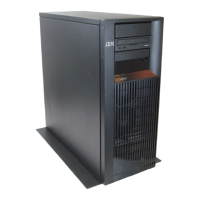v Mix interactive and batch jobs on a wide area network line
v Performance considerations for AnyNet communications
v Subsystems
Considerations for subsystem configuration for error recovery
performance
Each piece of work that runs on the AS/400 system is called a job. Each job is a single, identifiable
sequence of processing actions that represents a single use of the system. The basic types of jobs
performed are interactive jobs, batch jobs, spooling jobs, autostart jobs, and prestart jobs.
Jobs that run in subsystems do all work that is performed on the AS/400. As the number of users on the
system increases, it becomes important for you to consider how the communications and interactive
subsystems should be configured.
The configuration of subsystems has little impact in normal data path operations. However, multiple
subsystems can provide multiple processes to do cleanup and recovery when error conditions occur. This
can result in improved performance.
As the number of users on the system increases, you must consider the importance of how subsystems
are configured:
v Consider limiting the number of devices that are serviced by a single subsystem. Between 200 and 300
devices for each subsystem are recommended. Use the following recommendations to divide these
users:
– The number of users in any given subsystem
– The connectivity used to access the system
– The type of work the users do
– The geographic location of the users
v Create additional communications and interactive subsystems to split the work into multiple subsystems.
v The work that is performed in the QCMN subsystem is for connecting and disconnecting from the
system. Error recovery considerations are important in the configuration of the communications
subsystem.
v To prevent a subsystem from ever allocating a device, ensure that there are no workstation or type
entries for the devices that you do what allocated by that subsystem.
v Only use the AT(*ENTER) option if you must allow jobs to transfer into that subsystem.
v For each subsystem you have defined, you need to identify which users will run in which subsystems.
Use the Add Work Station Entry (ADDWSE) command and the Remove Work Station Entry (RMVWSE)
command. You can set up work stations entries that identify which devices that subsystem should
allocate, as well as which devices a subsystem should not allocate.
Note: You can use the ADDWSE commands while the subsystem is active. However, subsystems do not
reallocate device locks dynamically. Eventually, it may be necessary to end and restart the
subsystems to have the device locks allocated to the desired subsystem.
To specify the devices a communications subsystem should allocate:
ADDCMNE SBSD(libname/sbsname) DEV(devname*) MODE(modename)
To specify the devices a communications subsystem should not allocate:
ADDCMNE SBSD(libname/sbsname) DEV(devname*) MODE(modename) MAXACT(0)
Note: Database and file servers run only in QSERVER. Do not attempt to allocate sessions running over
the QSERVER mode description. You can do this by adding the following communication entry to
your subsystem:
ADDCMNE (SBSD(libname/sbsname) DEV(devname*) MODE(QSERVER) MAXACT(0)
See the following example for a way of configuring your communications subsystem.
Chapter 3. Optimizing communications performance 11

